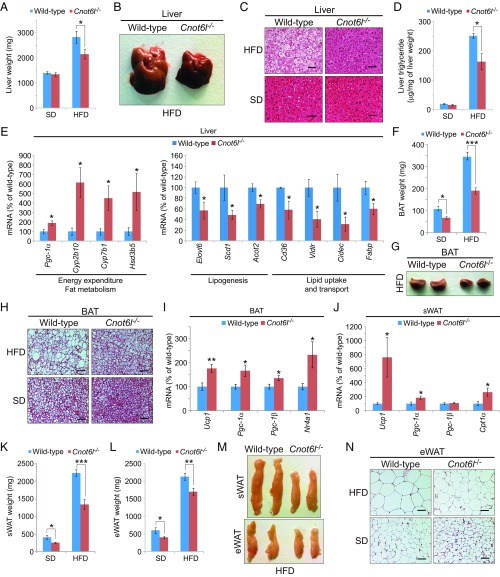Fig. 5.
Cnot6l deletion leads to a resistance to lipid accumulation and an increase in energy expenditure in the liver, BAT, and WAT. (A–D) Weight (A), representative image (B), representative H&E staining (C), and triglyceride contents (D) of livers from wild-type and Cnot6l−/− mice fed on a SD or HFD. n = 8–12 per group. (Scale bars, 50 μm.) Liver triglyceride contents were normalized to liver weight. (E) Expression of genes involved in energy expenditure, fatty acid oxidation, lipogenesis, and lipid uptake and transport in the liver of wild-type and Cnot6l−/− mice fed on an HFD. n = 4–6 per group. (F–H) Weight (F), representative image (G), and representative H&E staining (H) of BAT of wild-type and Cnot6l−/− mice fed on an SD or HFD. n = 8–12 per group. (I–J) Expression of the indicated mRNAs in BAT (I) and sWAT (J) of wild-type and Cnot6l−/− mice fed on an HFD. n = 5–7 per group. (K–N) Weight of sWAT (K) and eWAT (L), representative sWAT and eWAT (M), and representative H&E staining of eWAT (N) from wild-type and Cnot6l−/− mice fed on SD or HFD. n = 8–12 per group. Data represent mean ± SEM. *P < 0.05, **P < 0.01, ***P < 0.001; Student’s t test for E, I, and J and two-way ANOVA with Tukey’s post hoc test for A, D, F, K, and L. (Scale bars, H and N, 50 μm.)

